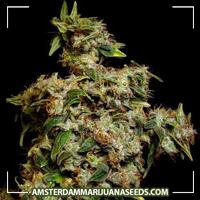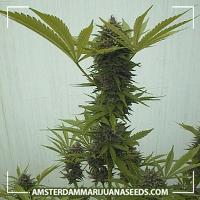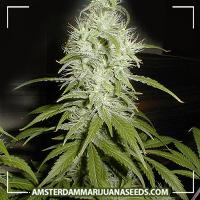Archive for March, 2014
Feed Me!
Nutrients
Nutrients are taken up from the soil by plants. Nutrient soil amendments (fertilizers) are added when the soil nutrients are depleted. Fertilizers can be chemical or organic, liquid or powder, and usually contain a mixture of ingredients. Commercial fertilizers indicate the levels of NPK (nitrogen, phosphorus, and potassium). During the vegetative stage, cannabis needs more N than P and K, while during the flowering stage, P is more essential than N and K. The presence of secondary nutrients (calcium, magnesium, sulfur) is recommended. Micro nutrients (e.g. iron, boron, chlorine, manganese, copper, zinc, molybdenum) rarely manifest as deficiencies.
Because Cannabis’ nutrient needs vary widely depending on the variety, they are usually determined by trial and error and fertilizers are applied sparingly to avoid burning the plant.
Light up my Life!
Light
Light can be natural (outdoor growing) or artificial (indoor growing).
Under artificial light, the plant typically remains under a regime of 16–20 hours of light and 4–8 hours of darkness from the germination until flowering, although the plant can use a full 24 hours of light without harm. There is an ongoing debate over the importance of the “dark period”. It has been shown that, when subjected to a regimen of constant light without a dark period, most types of flora, including Cannabis, will begin to show signs of decreased photosynthetic response, lack of vigor, and an overall decrease in vascular development. There is no defined flowering “stage”, unless you are discussing an auto-flowering variety (Cannabis Ruderalis). Typically, flowering is induced by changing the light schedule to 12 hours of light and 12 hours of darkness. Flowering in cannabis is triggered by a hormonal reaction within the plant that is initiated by an increase in its dark cycle, i.e. the plant needs sufficient prolonged darkness for bract/bracteole (flowering) to begin. Some Indica varieties require as little as 8 hours of dark to begin flowering, whereas some Sativa varieties require up to 13 hours.
Down with dirt
Growth medium
Soil is required, except for cannabis grown with hydroponics or aeroponics
Sufficient nutrients—commercial potting soils usually indicate this as “N-P-K = x%-y%-z%” the percentages of the fundamental nutritional elements, i.e., nitrogen, phosphorus and potassium. Nutrients are often provided to the soil via fertilizers but such practice requires caution.
pH between 5.9 and 6.5. This value can be adjusted – see soil pH. Commercial fertilizers (even organic) tend to make the soil more acidic (decrease its pH).
Warmth
The optimal day temperature range for cannabis is 24 to 30 °C (75 to 86 °F). Temperatures above 31 °C and below 15.5 °C seem to decrease THC potency and slow growth. At 13 °C the plant undergoes a mild shock, though some strains withstand frost temporarily. Frost occurs when air temperatures dip below 0 °C (32 °F) and ice crystals form.
Light
Light can be natural (outdoor growing) or artificial (indoor growing).
Under artificial light, the plant typically remains under a regime of 16–20 hours of light and 4–8 hours of darkness from the germination until flowering, although the plant can use a full 24 hours of light without harm. There is an ongoing debate over the importance of the “dark period”. It has been shown that, when subjected to a regimen of constant light without a dark period, most types of flora, including Cannabis, will begin to show signs of decreased photosynthetic response, lack of vigor, and an overall decrease in vascular development. There is no defined flowering “stage”, unless you are discussing an auto-flowering variety (Cannabis Ruderalis). Typically, flowering is induced by changing the light schedule to 12 hours of light and 12 hours of darkness. Flowering in cannabis is triggered by a hormonal reaction within the plant that is initiated by an increase in its dark cycle, i.e. the plant needs sufficient prolonged darkness for bract/bracteole (flowering) to begin. Some Indica varieties require as little as 8 hours of dark to begin flowering, whereas some Sativa varieties require up to 13 hours.
Water
Watering frequency and amount is determined by many factors, including temperature and light, the age, size and stage of growth of the plant and the medium’s ability to retain water. A conspicuous sign of water problems is the downward wilting of leaves. Too much water can kill young cannabis plants.
The additives in municipal water can reduce plant growth and can be removed with reverse osmosis filtration but is expensive and produces poorer results than well or spring water.
Amsterdam Marijuana Seeds
Germination

Germination is initiated by soaking seeds either between wet paper towels, in a cup of water at room temperature, in wet peat pellets, or directly in potting soil. Peat pellets are often used as a germinating medium because the saturated pellets with their seedlings are planted directly into the intended growing medium with a minimum of shock to the plant.
| THC Level | Up to 15% |
| Indica / Sativa | Not available |
| Yield indoor | Up to 425 gram / 15 ounces per sq meter |
| Yield outdoor | Up to 800 gram / 15 ounces per plant |
| Height indoor | Up to 120 cm / 47 inch |
| Height outdoor | Up to 180 cm / 71 inch |
| Flowering time | 8 to 9 weeks |
| Harvest month | September / October |
| Grow difficulty | Easy / Moderate |
 AK 47 XTRM auto feminized seeds
AK 47 XTRM auto feminized seeds
| THC Level | Not available |
| Indica / Sativa | Ruderalis |
| Yield indoor | Up to 600 gram / 21.2 ounces per sq meter |
| Yield outdoor | Up to 100 gram / 21.2 ounces per plant |
| Height indoor | Up to 70 cm / 28 inch |
| Height outdoor | Up to 90 cm / 35 inch |
| Flowering time | 7 weeks |
| Grow difficulty | Easy to grow |
 Amnesia Trance Feminized seeds
Amnesia Trance Feminized seeds
| THC Level | Up to 26% |
| Indica / Sativa | Indica 35% | Sativa 65% |
| Yield indoor | Up to 450 gram / 15.9 ounces per sq meter |
| Yield outdoor | Up to 600 gram / 15.9 ounces per plant |
| Height indoor | Up to 90 cm / 35 inch |
| Height outdoor | Up to 250 cm / 98 inch |
| Flowering time | 9 to 10 weeks |
| Harvest month | October / November |
| Grow difficulty | Moderate |
| THC Level | Up to 20% |
| Indica / Sativa | Indica 75% | Sativa 25% |
| Yield indoor | Up to 450 gram / 15.9 ounces per sq meter |
| Yield outdoor | Up to 500 gram / 15.9 ounces per plant |
| Height indoor | Up to 60 cm / 24 inch |
| Height outdoor | Up to 180 cm / 71 inch |
| Flowering time | 8 to 9 weeks |
| Harvest month | September / October |
| Grow difficulty | Easy / Moderate |
| THC Level | Up to 20% |
| Indica / Sativa | Indica 10% | Sativa 90% |
| Yield indoor | Up to 400 gram / 14.1 ounces per sq meter |
| Yield outdoor | Up to 425 gram / 14.1 ounces per plant |
| Height indoor | Up to 100 cm / 39 inch |
| Height outdoor | Up to 250 cm / 98 inch |
| Flowering time | 10 to 12 weeks |
| Harvest month | September / October |
| Grow difficulty | Moderate |
Aeroponics
Aeroponics is the process of growing plants in an air or mist environment without the use of soil or an aggregate medium (known as geoponics). The word “aeroponic” is derived from the Greek meanings of aero- (air) and ponos (labour). Aeroponic culture differs from both conventional hydroponics, aquaponics, and in-vitro (plant tissue culture) growing. Unlike hydroponics, which uses a liquid nutrient solution as a growing medium and essential minerals to sustain plant growth; or aquaponics which uses water and fish waste, aeroponics is conducted without a growing medium. Because water is used in aeroponics to transmit nutrients, it is sometimes considered a type of hydroponics.
The basic principle of aeroponic growing is to grow plants suspended in a closed or semi-closed environment by spraying the plant’s dangling roots and lower stem with an atomized or sprayed, nutrient-rich water solution. The leaves and crown, often called the “canopy”, extend above. The roots of the plant are separated by the plant support structure. Many times closed cell foam is compressed around the lower stem and inserted into an opening in the aeroponic chamber, which decreases labor and expense; for larger plants, trellising is used to suspend the weight of vegetation and fruit.
Ideally, the environment is kept free from pests and disease so that the plants may grow healthier and more quickly than plants grown in a medium. However, since most aeroponic environments are not perfectly closed off to the outside, pests and disease may still cause a threat. Controlled environments advance plant development, health, growth, flowering and fruiting for any given plant species and cultivars.
Due to the sensitivity of root systems, aeroponics is often combined with conventional hydroponics, which is used as an emergency “crop saver” – backup nutrition and water supply – if the aeroponic apparatus fails.
High-pressure aeroponics is defined as delivering nutrients to the roots via 20–50 micrometre mist heads using a high-pressure (80 pounds per square inch (550 kPa)) diaphragm pump.
Benefits of oxygen in the root zone
Oxygen in the rhizosphere (root zone) is necessary for healthy plant growth. As aeroponics is conducted in air combined with micro-droplets of water, almost any plant can grow to maturity in air with a plentiful supply of oxygen, water and nutrients.
Some growers favor aeroponic systems over other methods of hydroponics because the increased aeration of nutrient solution delivers more oxygen to plant roots, stimulating growth and helping to prevent pathogen formation.
Clean air supplies oxygen which is an excellent purifier for plants and the aeroponic environment. For natural growth to occur the plant must have unrestricted access to air. Plants must be allowed to grow in a natural manner for successful physiological development. The more confining the plant support becomes, the greater incidence of increasing disease pressure of the plant and the aeroponic system.
Hydro Growing
Advantages
Some of the reasons why hydroponics is being adapted around the world for food production are the following:
- No soil is needed for hydroponics.
- The water stays in the system and can be reused – thus, a lower water requirement.
- It is possible to control the nutrition levels in their entirety – thus, lower nutrition requirements.
- No nutrition pollution is released into the environment because of the controlled system.
- Stable and high yields.
- Pests and diseases are easier to get rid of than in soil because of the container’s mobility.
- Ease of harvesting.
- No pesticide damage.
- Plants grow healthier.
- It is better for consumption.
Today, hydroponics is an established branch of horticulture. Progress has been rapid, and results obtained in various countries have proved it to be thoroughly practical and to have very definite advantages over conventional methods of horticulture.
There are two chief merits of the soil-less cultivation of plants. First, hydroponics may potentially produce much higher crop yields. Also, hydroponics can be used in places where in-ground agriculture or gardening are not possible.
Disadvantages
Without soil as a buffer, any failure to the hydroponic system leads to rapid plant death. Other disadvantages include pathogen attacks such as damp-off due to Verticillium wilt caused by the high moisture levels associated with hydroponics and over watering of soil based plants. Also, many hydroponic plants require different fertilizers and containment systems.
Techniques
The two main types of hydroponics are solution culture and medium culture. Solution culture does not use a solid medium for the roots, just the nutrient solution. The three main types of solution cultures are static solution culture, continuous-flow solution culture and aeroponics. The medium culture method has a solid medium for the roots and is named for the type of medium, e.g., sand culture, gravel culture, or rockwool culture.
There are two main variations for each medium, sub-irrigation and top irrigation. For all techniques, most hydroponic reservoirs are now built of plastic, but other materials have been used including concrete, glass, metal, vegetable solids, and wood. The containers should exclude light to prevent algae growth in the nutrient solution.
Static solution culture
In static solution culture, plants are grown in containers of nutrient solution, such as glass Mason jars (typically, in-home applications), plastic buckets, tubs, or tanks. The solution is usually gently aerated but may be un-aerated. If un-aerated, the solution level is kept low enough that enough roots are above the solution so they get adequate oxygen. A hole is cut in the lid of the reservoir for each plant. There can be one to many plants per reservoir. Reservoir size can be increased as plant size increases. A home made system can be constructed from plastic food containers or glass canning jars with aeration provided by an aquarium pump, aquarium airline tubing and aquarium valves. Clear containers are covered with aluminium foil, butcher paper, black plastic, or other material to exclude light, thus helping to eliminate the formation of algae. The nutrient solution is changed either on a schedule, such as once per week, or when the concentration drops below a certain level as determined with an electrical conductivity meter. Whenever the solution is depleted below a certain level, either water or fresh nutrient solution is added, A Mariotte’s bottle, or a float valve, can be used to automatically maintain the solution level. In raft solution culture, plants are placed in a sheet of buoyant plastic that is floated on the surface of the nutrient solution. That way, the solution level never drops below the roots.
Continuous-flow solution culture
In continuous-flow solution culture, the nutrient solution constantly flows past the roots. It is much easier to automate than the static solution culture because sampling and adjustments to the temperature and nutrient concentrations can be made in a large storage tank that has potential to serve thousands of plants. A popular variation is the nutrient film technique or NFT, whereby a very shallow stream of water containing all the dissolved nutrients required for plant growth is recirculated past the bare roots of plants in a watertight thick root mat, which develops in the bottom of the channel and has an upper surface that, although moist, is in the air. Subsequent to this, an abundant supply of oxygen is provided to the roots of the plants. A properly designed NFT system is based on using the right channel slope, the right flow rate, and the right channel length. The main advantage of the NFT system over other forms of hydroponics is that the plant roots are exposed to adequate supplies of water, oxygen, and nutrients. In all other forms of production, there is a conflict between the supply of these requirements, since excessive or deficient amounts of one results in an imbalance of one or both of the others. NFT, because of its design, provides a system where all three requirements for healthy plant growth can be met at the same time, provided that the simple concept of NFT is always remembered and practised. The result of these advantages is that higher yields of high-quality produce are obtained over an extended period of cropping. A downside of NFT is that it has very little buffering against interruptions in the flow, e.g., power outages. But, overall, it is probably one of the more productive techniques.
The same design characteristics apply to all conventional NFT systems. While slopes along channels of 1:100 have been recommended, in practice it is difficult to build a base for channels that is sufficiently true to enable nutrient films to flow without ponding in locally depressed areas. As a consequence, it is recommended that slopes of 1:30 to 1:40 are used. This allows for minor irregularities in the surface, but, even with these slopes, ponding and water logging may occur. The slope may be provided by the floor, or benches or racks may hold the channels and provide the required slope. Both methods are used and depend on local requirements, often determined by the site and crop requirements.
As a general guide, flow rates for each gully should be 1 liter per minute. At planting, rates may be half this and the upper limit of 2 L/min appears about the maximum. Flow rates beyond these extremes are often associated with nutritional problems. Depressed growth rates of many crops have been observed when channels exceed 12 metres in length. On rapidly growing crops, tests have indicated that, while oxygen levels remain adequate, nitrogen may be depleted over the length of the gully. As a consequence, channel length should not exceed 10–15 metres. In situations where this is not possible, the reductions in growth can be eliminated by placing another nutrient feed halfway along the gully and reducing flow rates to 1 L/min through each outlet.
Growing Bigger Buds with Marijuana Booster
 Whether you’re growing marijuana for personal use or you’re looking to make a little extra money on the side, you always want to have the biggest buds. The buds are where you get the most “meat” on the marijuana plant, and you’ll certainly be able to enjoy the fruits of your labor for much longer with bigger buds. But, achieving big buds isn’t always a matter of plant genetics or complete luck. You have to put in a lot of effort, and you have to understand exactly what the plant needs at each stage of its life.
Whether you’re growing marijuana for personal use or you’re looking to make a little extra money on the side, you always want to have the biggest buds. The buds are where you get the most “meat” on the marijuana plant, and you’ll certainly be able to enjoy the fruits of your labor for much longer with bigger buds. But, achieving big buds isn’t always a matter of plant genetics or complete luck. You have to put in a lot of effort, and you have to understand exactly what the plant needs at each stage of its life.
 For starters, you have to understand the basics of nutrient uptake within the plant. Nutrients act like food for the plant to thrive and grow tall. Of course, nutrients are also largely responsible for the size of the buds by the time the harvest comes around. Nutrients aren’t the only variable, but they’re wildly important. The main triplet of nutrients that you’ll often come across in most fertilizers consists of nitrogen (N), phosphorus (P), and potassium (K). On most fertilizers, there is a little “NPK” value that indicates how much of each nutrient is in the fertilizer. For the most part, you’ll want a fertilizer with a higher concentration of nitrogen during vegetative state. Nitrogen is primarily responsible for the overall growth and healthy function of the plant. It helps the plant thrive during vegetative state and it also sets the stage for success once your plants enter the flowering stage. When a plant reaches flowering stage, they require a different kind of fertilizer concentration, one that is higher in phosphorus and potassium than nitrogen. At that point, it’s a good idea to switch to a “bloom fertilizer” to help out with bud
For starters, you have to understand the basics of nutrient uptake within the plant. Nutrients act like food for the plant to thrive and grow tall. Of course, nutrients are also largely responsible for the size of the buds by the time the harvest comes around. Nutrients aren’t the only variable, but they’re wildly important. The main triplet of nutrients that you’ll often come across in most fertilizers consists of nitrogen (N), phosphorus (P), and potassium (K). On most fertilizers, there is a little “NPK” value that indicates how much of each nutrient is in the fertilizer. For the most part, you’ll want a fertilizer with a higher concentration of nitrogen during vegetative state. Nitrogen is primarily responsible for the overall growth and healthy function of the plant. It helps the plant thrive during vegetative state and it also sets the stage for success once your plants enter the flowering stage. When a plant reaches flowering stage, they require a different kind of fertilizer concentration, one that is higher in phosphorus and potassium than nitrogen. At that point, it’s a good idea to switch to a “bloom fertilizer” to help out with bud
growth.
The Benefits of Marijuana Booster
 This is really the traditional way to grow larger buds, and it has worked to a certain degree for years. But, there are a lot more than just three nutrients at play in fertilizers and inside the living marijuana plant. It can be hard to hit the right balance of nutrients during vegetative state and flowering state. If you could find a fertilizer product that would take the nutrient guesswork out of your hands, then you’d probably jump at that opportunity. One such product is Marijuana Booster, a revolutionary growth program that can guarantee you a good return on your investment. If you want bigger buds from your harvest, then Marijuana Booster can certainly help out.
This is really the traditional way to grow larger buds, and it has worked to a certain degree for years. But, there are a lot more than just three nutrients at play in fertilizers and inside the living marijuana plant. It can be hard to hit the right balance of nutrients during vegetative state and flowering state. If you could find a fertilizer product that would take the nutrient guesswork out of your hands, then you’d probably jump at that opportunity. One such product is Marijuana Booster, a revolutionary growth program that can guarantee you a good return on your investment. If you want bigger buds from your harvest, then Marijuana Booster can certainly help out.
It does so by providing a large mix of nutrients that are best suited to growing large, healthy plants with large, healthy buds. You won’t just find the standard “NPK” nutrients in Marijuana Booster. You’ll encounter plenty of micronutrients like boron, manganese, calcium, and more. Marijuana Booster is essentially the perfect mixture of nutrients to help marijuana grow to its fullest capacity with huge buds dripping with THC. It also comes with a feeding and watering schedule to help you along the way. If you want to get ahead of the game, then Marijuana Booster gives you the best option.








